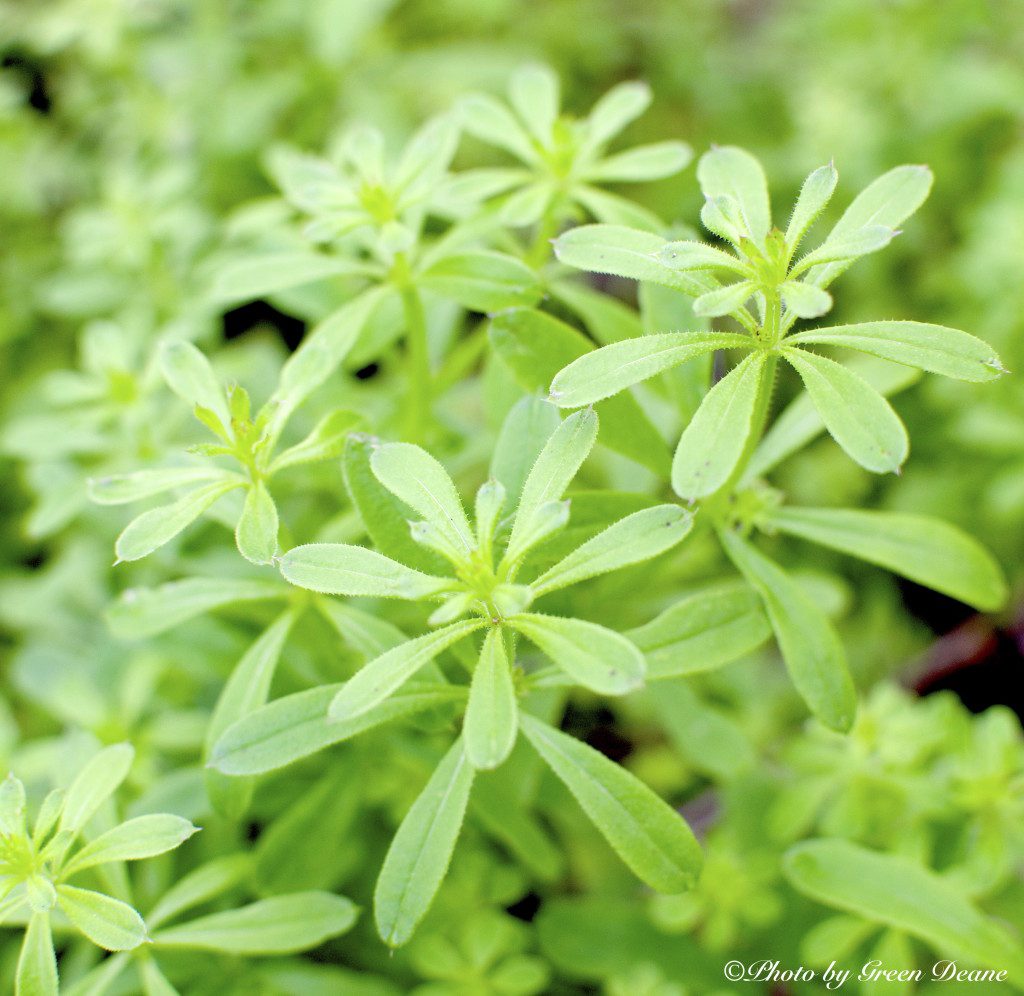
A winter edible you should be scouting for is Galium aparine, or Goosegrass (and a half-a-dozen other names.)
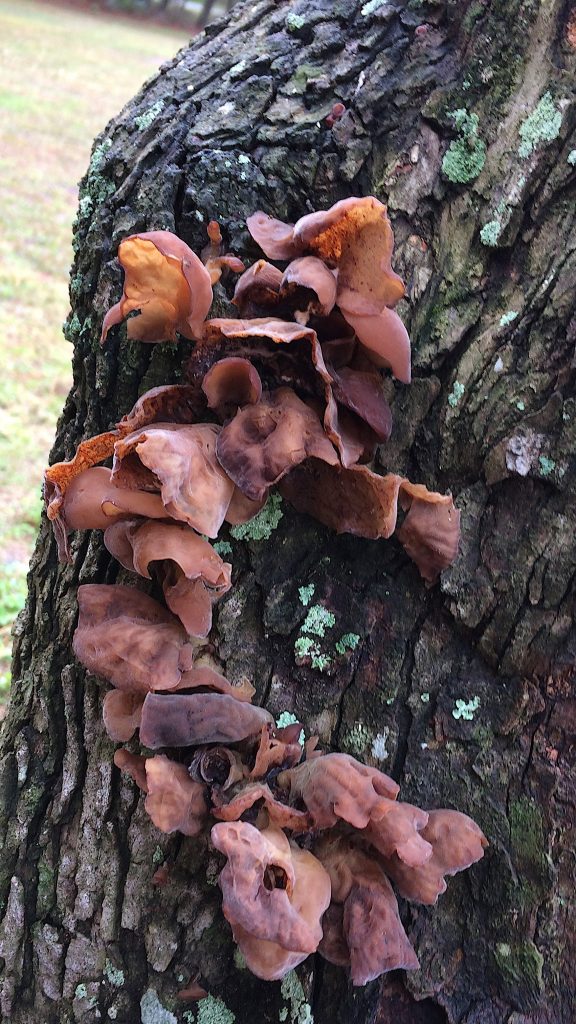
I saw it for the first time this season last weekend on the bike trail during a class at Sanlando Park in Altamonte Springs. There are several local Galiums but Goosegrass is fairly easy to identify. First, it likes medium to drier areas than wet to medium. Also it has whorls of leaves, usually six to eight. That means locally if you find a Galium and it has whorls that included seven or eight leaves you have the right one. If you have whorles of six or less leaves you have the wrong species. Young growing tips are edible raw or cook and are good for the lymph system. However, its season is short, nearly as short as chickweed so you have to look for it now. Unmown waste areas is a good place to start, where people have piled up plant debris. It also can be found in shade. To read more about Goosegrass go here.
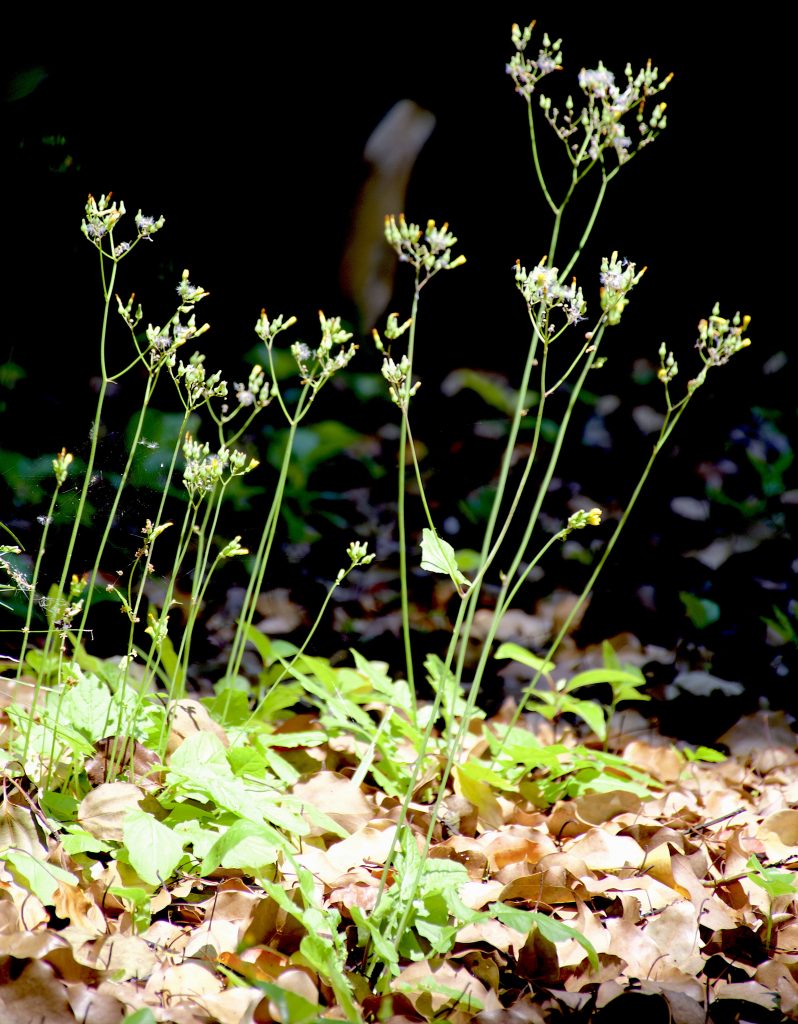
The False Hawk’s Beard — Crepis japonica — is not too particular where it grows. You can find it in your lawn, garden, or in sidewalk cracks. Non-native, it’s a distant Asian relative of the Dandelion and is well into its seasonal presence. There are quite a few different species in the genus and they are all reportedly edible. Thus, if there is a Crepis near you there’s always something to forage for. Fairly easy to identify and of good taste they seem to get left out of most foraging books even though they are naturalized across North America. To learn more about the False Hawk’s Beard go here.
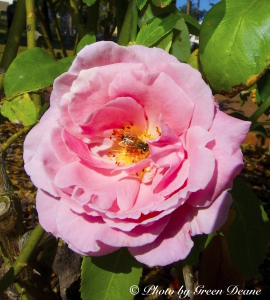
While it seems counter intuitive Roses seem to do well in the southern winter. They don’t like the summer heat and are a challenge to grow here. So this time of year some of them are at their blossoming best. We should see some in our Urban Crawl (see below.) The Rose family is a friendly one to foragers from blossoms such as this one to apples which are related. High in vitamin C, Roses have been used medicinally for about as long as man has been fiddling with medicine. As a side note back in the 90s during my mid-life crisis I decided to go to law school. I was accepted by several and to earn money before classes started I delivered flowers. It was a job with many surprises but one of them was the big, gorgeous roses we delivered for holidays like Valentine’s Day had no scent. They were bred for beauty. We had to spray artificial rose scent on them just before delivery. One also learned very quickly to spray the roses outside of the delivery van or the van and you smelled intensely of roses for several days. To read more about roses go here.
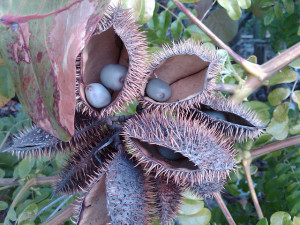
These strange seed pods are not edible. In fact nothing about the nicker bean is edible. But it does have some medicinal qualities. I’ve included it because not only does it grow in the brackish water but when people see it they want to know what it is thus it is the subject of a lot of email. If I remember correctly there are five different nicker bean species and at least two or three are are native. The seed pods and gray seeds are used in flower arrangements. A quinine- like drug is derived from the plant. Like the Smilax it is also classified as a “climbing shrub.” I have struggled for years to exactly understand what a “climbing shrub” is. It looks more like a vine but is not a vine or more specifically a liana which is a long woody vine. The difference between a shrub and a tree is height and number of main trunks (tree one, shrubs many.) So it is woody, and has many trunks… that’s still doesn’t help much. To read a little more about the Nicker bean go here.
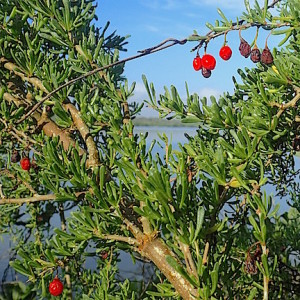
What better find for the Yule Tide season than Christmasberry. While there are many “Christmasberries” this one is in the Goji group. An Asian Goji is much touted for its healthy fruit. Our local “Goji” is shrub that favors brackish water areas such as Florida’s inland coastal waterway. The plant itself does not resemble most Nightshades but the blossoms do. These berries were found at Turtle Mound, which is an ancient trash heap and tourist trap. I usually find Christmasberries later in the spring but these shrubs were on the west side of the mound where they get full afternoon sun in a protected environment. They were also at water’s edge. To read more about the Christmasberry go here.
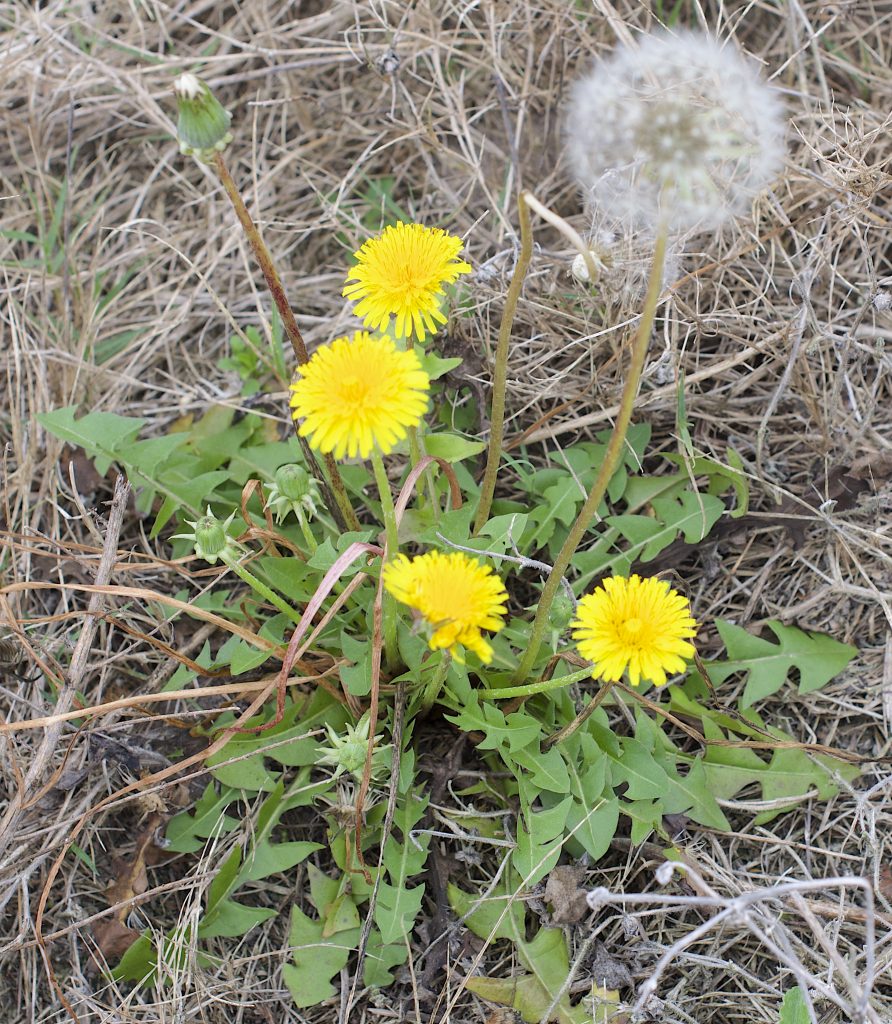
Where have all the Dandelions gone? If you’re in a northern clime they are waiting for spring and summer. Locally Dandelions do not like our hot summers so they go through their growth cycle in the winter. Life is precarious for a Dandelion hereabouts. While you can find an occasional one any time of year they become more common in the cooler months. You start to find small ones around November, basal rosettes first. I saw my first blossoms for the season last week. Between now and February they’ll send up blossoms. It’s a short-lived success in February because the nights can also be close to freezing. The other problem is they never get as large here as they do in northern climates, rarely more than a foot high. To find Dandelions you first have to identify acidic soil. Florida is a limestone door stop under the North American Plate. So you have to look for Dandelions where the soil is on the acidic side, such as under pines, oaks or not-so-wet cypress. That is also where to look for blueberries. To see my video on Dandelions go here, to read more about Dandelions, click here.
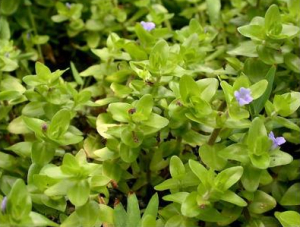
Before I forget it is time to write about Bacopa again. Actually there are two Bacopas locally; Lemon Bacopa and Water Hyssop. They are quite different and perhaps it takes a trained botanical eye to appreciate their similarities which strike me as few. Perhaps their greatest difference is texture. Lemon Bacopa is soft, fuzzy, and crushes easily. Water Hyssop is tough and shiny, resiliant. Lemon Bacopa is aromatic and fruity in flavor, Water Hyssop is just pain bitter. Water Hyssop definitely can help with memory issues, Lemon Bacopa is more iffy on that score. One does not find Lemon Bacopa too often whereas Water Hyssop is nearly everywhere the soil is wet. I have found Lemon Bacopa only three times; two of them in the wet ruts of woods roads. There is also a lake near me that has a little growing near a boat ramp when the water level is just right. As my article speaks more towards Lemon Bacopa I will adress Water Hyssop here. It basically stimulates the brain to make new memory cells specifically in the hippocampus. It is anti-inflammatory and interacts with the dopamine and serotenergic systems. As you might expect growing new memory cells enough to notice takes time. So Bacopa has to be taken daily for at least three months. I have had several people tell me it has made significant differences in their lives. It does not work on all causes of (age-related) memory problems but if it does work it does so dramatically. You can read about both Bacopas here.
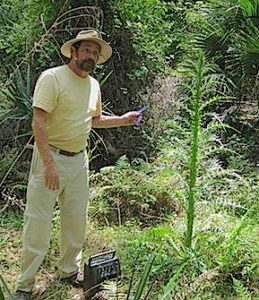
Foraging Classes One of the reasons why I like to hold classes from the Carolinas to South Florida is I get to see edibles ranging from a temperate forest to tropical. In West Palm Beach this coming Saturday (Dec. 22nd) we’ll see a good mix. There are Mango and Jambuls trees, the latter can put on some fruit out of season as they are now in Port Charlotte. There are Mahogany trees which are interesting to look at but their “nut” is not edible. Tamarinds, however, do have edible pods. These tamarinds are also not far in the park from what I call the Child-Proof tree, the Silk Floss which will also grow in Central Florida. There is one in Winter Park and Winter Garden. It is huge and very well armed with thorns and tiny edible parts one can never reach. There used to be Cashew tree there but Hurricane Irma destroyed it. And I’ve also never quite timed it right to catch the Spanish Cherry tree in Dreher Park ripe to eat. On Sunday (Dec, 23) I have a class in Blanchard Park in east Orlando which always has a variety. It will be chilly to start with so dress warmly.
Saturday, December 22nd, Dreher Park, 1200 Southern Blvd., West Palm Beach, 33405. Nine a.m. to noon. Meet just north of the science center.
Sunday, December 23rd, Blanchard Park, 10501 Jay Blanchard Trail, Orlando, FL 32817. 9 a.m. to noon, meet at the tennis courts next to YMCA building.
Saturday, December 29th, Jervey Gantt Recreation Complex, 2390 SE 36th Ave., Ocala, FL, 34471. 9 a.m. to noon. Meet in the parking lot north of the water complex
Saturday, January 5th, Spruce Creek Park, Port Orange, 9 a.m. to noon. Entrance is on the west side of southbound Ridgewood Ave (which is also US 1) Northbound traffic will have to make a U-turn. For southbound traffic, after passing Nova Road and the twin bridges the park entrance is 1/2 mile south on your right. Meet at the Pavilion.
Sunday, January 6th, Red Bug Slough Preserve, 5200 Beneva Road, Sarasota, FL, 34233. Nine a.m. to noon. Meet at the playground.
To learn more about the classes go here.
Pinellas County... has decided that foraging classes in county parks is not an approved activity. Some cities in the same county have a similar attitude. All it takes is one governmental lawyer… So I am looking for a private place or business to hold foraging classes in that county. Several acres with differing terrain is good. Bathrooms and parking are necessities. If you know of such a location — private property, a nursery or a city (park) that does not mind please let me know.
I’ve uploaded a new video and have one in the making for this week. The link is under the photo to the right. It’s about if you want to look for wild food where do you look? All of my videos are available for free on You Tube. They do have ads on them so every time you watch a Green Deane video I get a quarter of one cent. Four views, one cent. Not exactly a large money-maker but it helps pays for this newsletter. If you want to see the videos without ads and some in slightly better quality you can order the DVD set. It is nine DVDs with 15 videos on each for a total of 135 videos. Many people want their own copy of the videos or they have a slow service and its easier to order then to watch them on-line. The DVDs make a good gift for that forager you know especially on long, cold winter months. Individual DVDs can also be ordered or you can pick and choose. You can order them by clicking on the button on the top right hand side of this page (if your window is open wide enough.) Or you can go here.
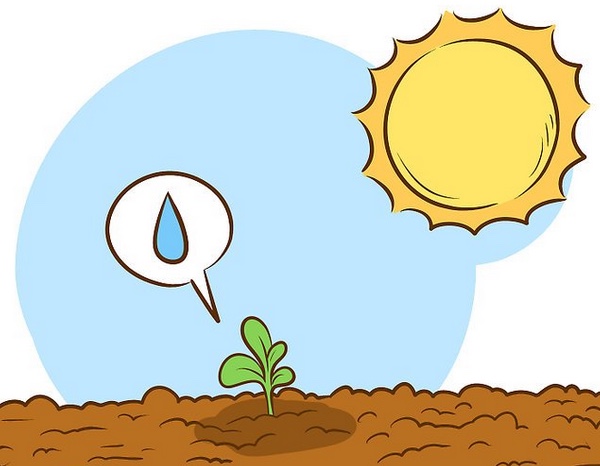
Donations to upgrade EatTheWeeds.com have gone well. Thank you to all who have contributed to either via the Go Fund Me link, the PayPal donation link or by writing to Green Deane POB 941793 Maitland FL, 32794. There are many needs left such as expanding the foraging teacher page and the page on monotypic edibles. Several functions were also lost when we transitioned to the new website. I’m still having a hard time finding articles I wrote! There’s always something and such things get more complex and expensive every year. Indeed, the average email cost to send each newsletter is $20.
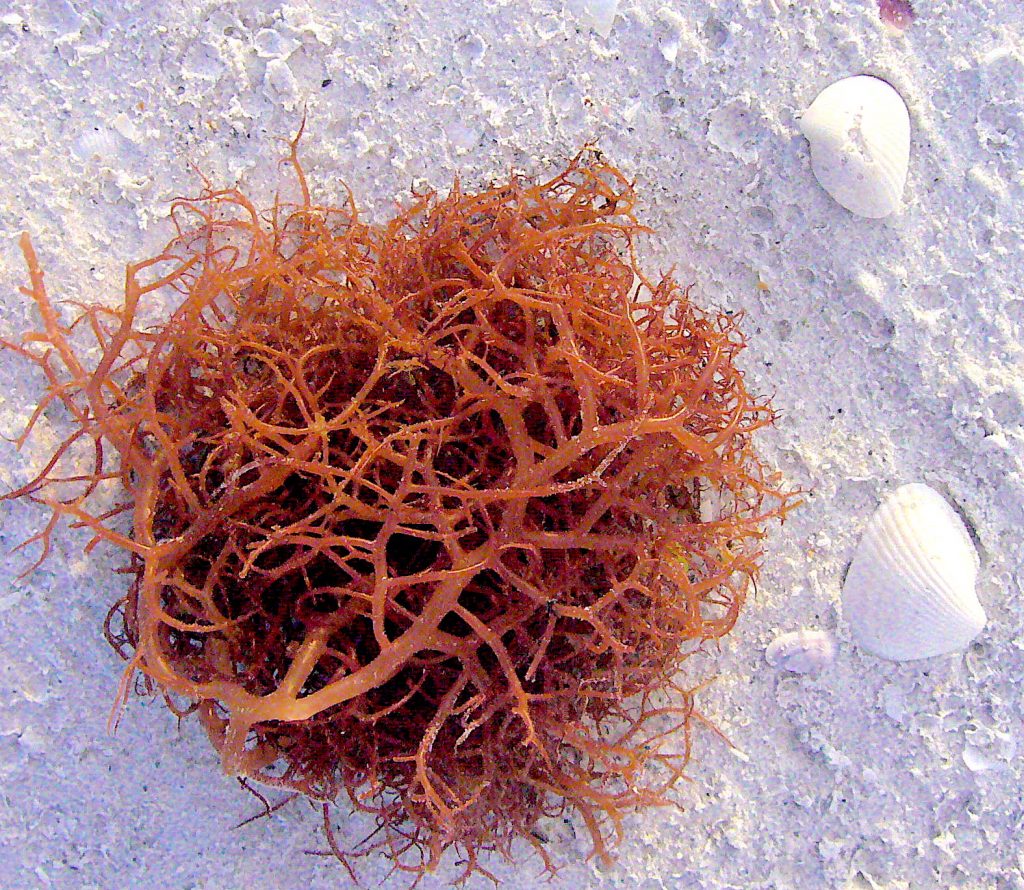
Want to identify a plant? Looking for a foraging reference? Do you have a UFO, an Unidentified Flowering Object you want identified? On the Green Deane Forum we chat about foraging all year. And it’s not just about warm-weather plants or just North American flora. Many nations around the world share common weeds so there’s a lot to talk about. There’s also more than weeds. The reference section has information for foraging around the world. There are also articles on food preservation, and forgotten skills from making bows to fermenting food. One special section is “From the Frightening Mail Bag” where we learn from people who eat first then ask questions later. You can join the forum by clicking on “forum” in the menu.
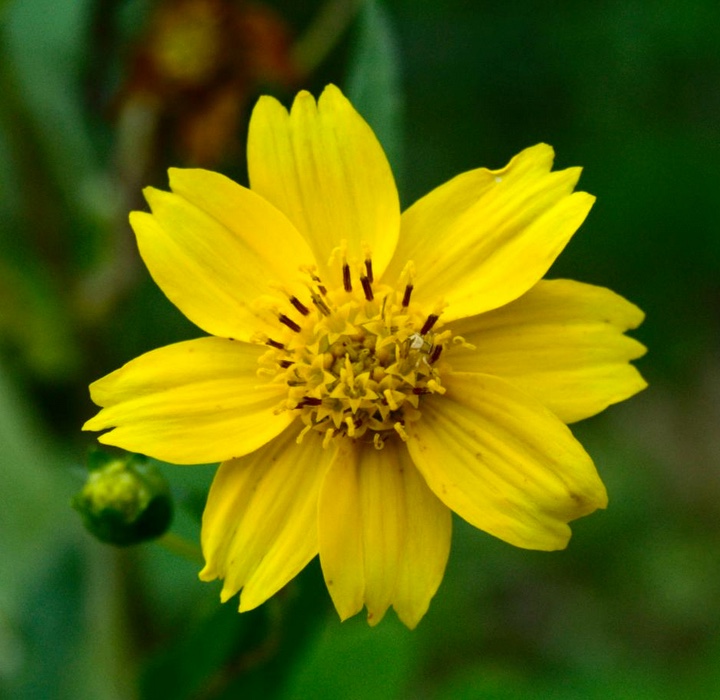
When you by thistle seeds in the United States to feed birds (or yourself) know they are not thistle seeds, despite the label. They are seeds of the Guizotia abyssinica, the Niger Seed which is really from the highlands of Ethiopia. Often sold as finch food the seeds are fried, used as a condiment, dried to make a chutney, or mixed with honey and made into sweet cakes. The oil is a substitute for Ghee. Imports of the seed became dicey after the U.S. government in 1982 said untreated seeds were adulterated with seeds from at least nine noxious weeds five of which are edible: African couchgrass, red rice, kodo millet, onion weed, and mesquites. A 2001 law required that imported Niger seed be heated to 248 °F (120 °C) for 15 minutes to stop any germination. A variety of G. abyssinica, EarlyBird Niger, was developed in 2002 and adapted to the United States. It is now in commercial agricultural production in the U.S.
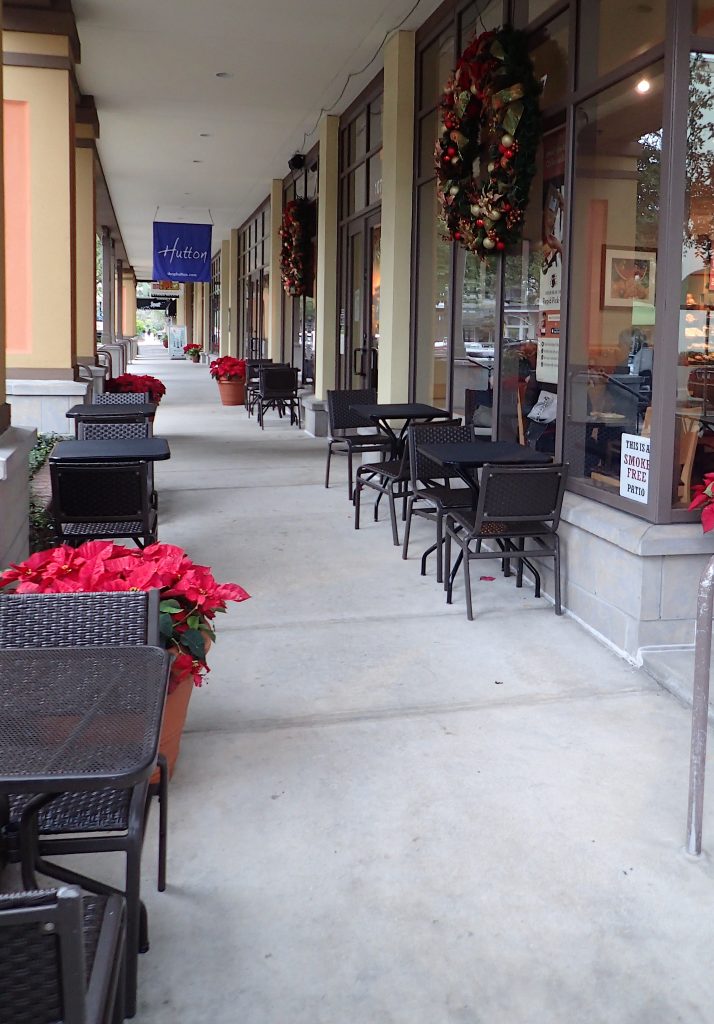
And this Friday, December 21st, will be my eighth, free Urban Crawl, a foraging class held in downtown Winter Park. We meet at 10 a.m. in front of Panera’s, 329 N. Park Avenue (that’s on the north end of Park Avenue, NOT the south end.) There is free parking west of Panera’s in the parking garage, levels four and five. We wander around Winter Park stopping at about half way for coffee and a bathroom break. We’re usually done between noon and 1 p.m. No reservation necessary, no charge. The rain should pass by 10 am. Friday but it might be windy so dress a bit warm and dry. There are plenty of places for us to duck if a lingering shower comes by.
This is weekly issue 335 and I think I will take next Tuesday off, Christmas. And on a personal note I am still interested in renting a small house or mother-in-law cottage in southwest Florida. If you know of any places please let me know. I am also pondering moving into an RV permanently. If you know of any available also please let me know.
If you would like to donate to Eat The Weeds please click here. Or you can use my Go Fund Me link, or by writing to Green Deane POB 941793 Maitland FL, 32794



I have moved from NY state to the Upstate in SC Greenville county area…I am wondering if you know ( or anyone that follows your website) of any folk that are foragers like yourself…that I can contact and learn from . Thank you
I cannot believe that Pinellas County has decided foraging class is politically incorrect. This country is truly going to hell. ?All the more reason to learn foraging!